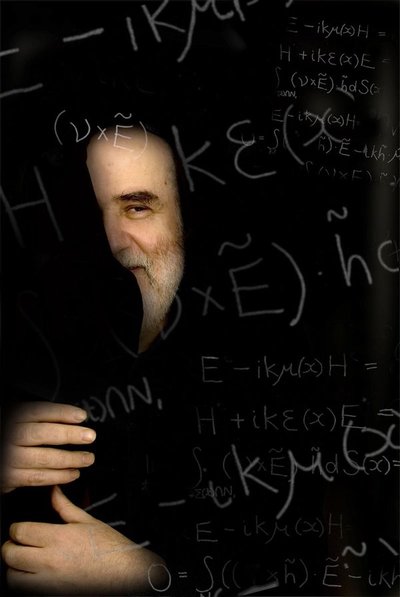January 25, 2007
Mathematicians conjure up invisibility cloak
Every child’s dream of becoming invisible leaped forward last year toward becoming a reality. A cloaking device has set the mathematical community buzzing about how to make invisibility not just possible, but practical.
“Who would have thought that people would be talking about invisibility in scientific terms?” said Gunther Uhlmann, the UW’s Walker Family endowed professor of mathematics.
Invisibility is a recurring theme in human legend, from Perseus’ helmet to Harry Potter’s cloak. The recent scientific hubbub began in May when a team of American and British physicists, none affiliated with the UW, announced they had solved the equations for an invisibility cloak. Five months later the team had constructed a prototype. The news rocked popular and scientific circles. The cloak was named one of the year’s top scientific achievements, and a video of a nearly invisible penny is posted on YouTube.
Uhlmann followed the news especially closely because he and his colleagues had discovered an invisibility cloak in 2003.
Yes, Uhlmann had unknowingly discovered the same equations three years earlier in another context. They were working on mathematical theory that underlies a way of detecting breast-cancer tumors by placing electrodes around the breast, measuring the voltage at different points, and then reconstructing the enclosed volume. Since tumors are more conductive than normal breast tissue, even small tumors would show up.
In their calculations, Uhlmann’s group found one case that didn’t work at all. For certain types of coatings they could not detect anything about the enclosed volume.
“This was the opposite of what we were looking for,” Uhlmann recalled. “We were trying to make invisible things visible, and not the opposite.” The group published its findings, including the mysterious case, in the journal Mathematics Research Letters.
And that was that. The breast-cancer research continued. The work is a type of inverse problem that uses measurements from the surface of a body — say a human body, or the Earth — to deduce what’s inside. UW mathematicians have been active in this area for 20 years, Uhlmann said, developing basic theories and applications to discover underground oil reserves and pinpoint buried land mines. But in July, Uhlmann received an e-mail from a colleague alerting him that an article in the journal Science contained some familiar equations.
A group of physicists showed that for certain types of coatings, sensors could — guess what? — sense absolutely nothing about the enclosed volume. Looking at the surrounding waves it was as if nothing was there. The group from Duke University and other institutions discovered the results independently, Uhlmann said.
“We had not thought about the positive aspects of this result,” he now admits. But he acknowledges that science doesn’t always follow a straight path.
The Duke researchers’ prototype cloak is a small cylinder, about the size of a donut, that can make a small object invisible to microwaves. Its creation was made possible by new materials, called metamaterials, that control electromagnetic waves and bend them through angles previously thought impossible. The existing invisibility cloak uses tiny copper wires embedded in fiberglass panels to manipulate incoming waves. Waves wrap around an object and return to their regular path.
Many drawbacks still exist. The current “cloak” is actually more of a thick shield. A person trapped inside the cloak would be completely cut off from the outside world. And so far, the cloak is invisible only to microwave frequencies. But many researchers are now clamoring to improve the design.
Uhlmann and his colleagues are revisiting their original equations. In a recently submitted paper, they solve equations showing how to make a cloak invisible to all incoming frequencies, including visible light. They also calculate how to shield living, glowing or electrically active objects. And although they hint at other surprises on the horizon, they’re keeping readers in suspense.
“This is a very active field and many people are interested, so we’d rather not discuss our ideas in detail at the moment,” Uhlmann said. He revealed, however, that they will look at “almost invisibility.” What happens when conditions aren’t quite the mathematical ideal? And what would be the consequence of cutting tiny peepholes into the cloak?
Applications for invisibility are endless. The military would have obvious interests. Surgeons might like metal instruments that were invisible to magnetic fields, so they could take magnetic resonance images on the operating table. Someday we might even be able to cloak buildings to make them invisible to seismic waves, Uhlmann said. But these applications — and any teenagers wanting to hide from their parents, employees wanting to occasionally disappear, or would-be thieves — will have to wait a few more years.
Uhlmann recently submitted the paper “Full wave invisibility of active devices at all frequencies” to the journal Communications in Mathematical Physics. Coauthors are Allan Greenleaf at the University of Rochester, a longtime collaborator; Matti Lassas at the Helsinki University of Technology, a former post-doctoral researcher at UW; and Yaroslav Kurylev at Loughborough University in the UK.


